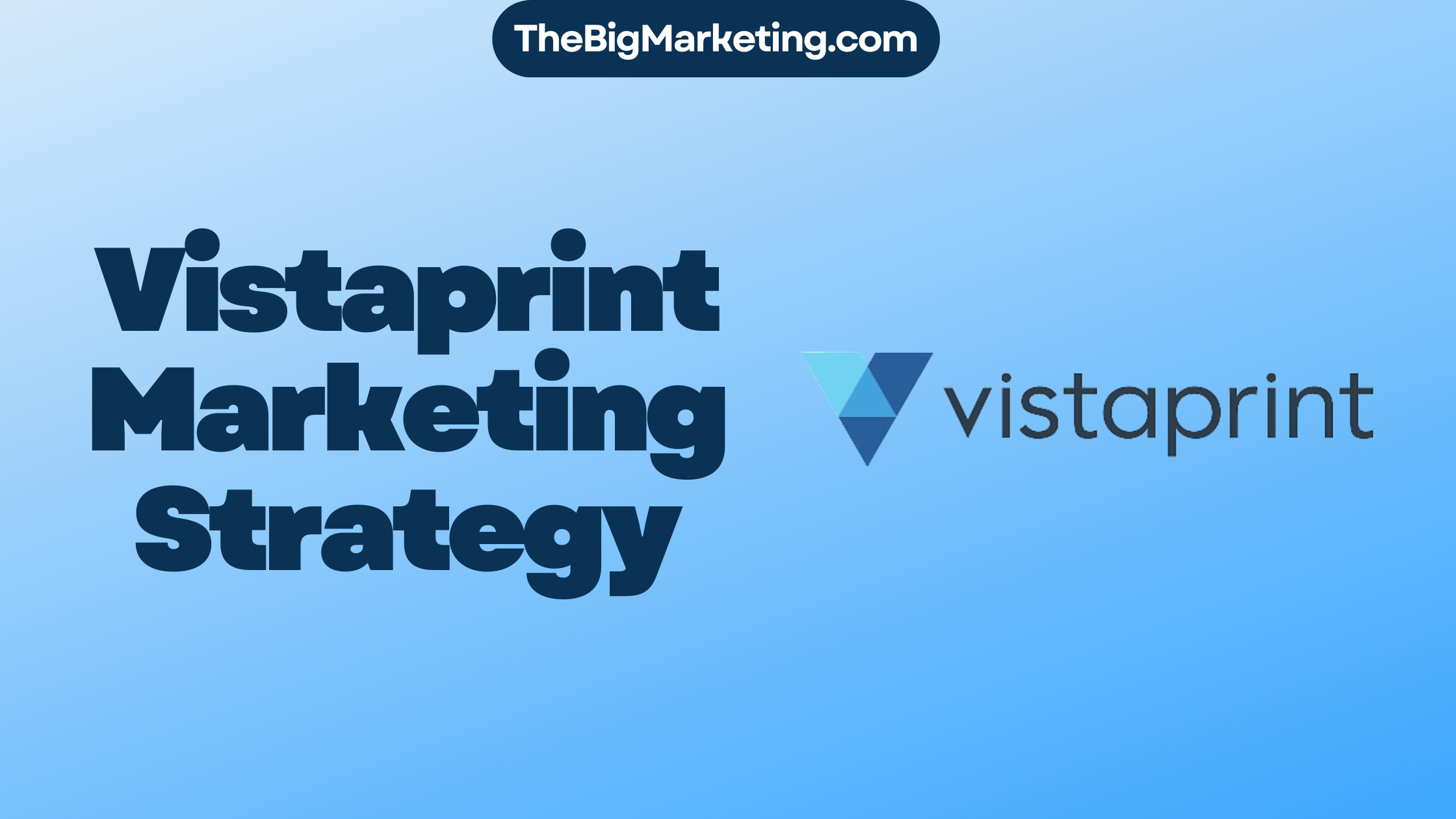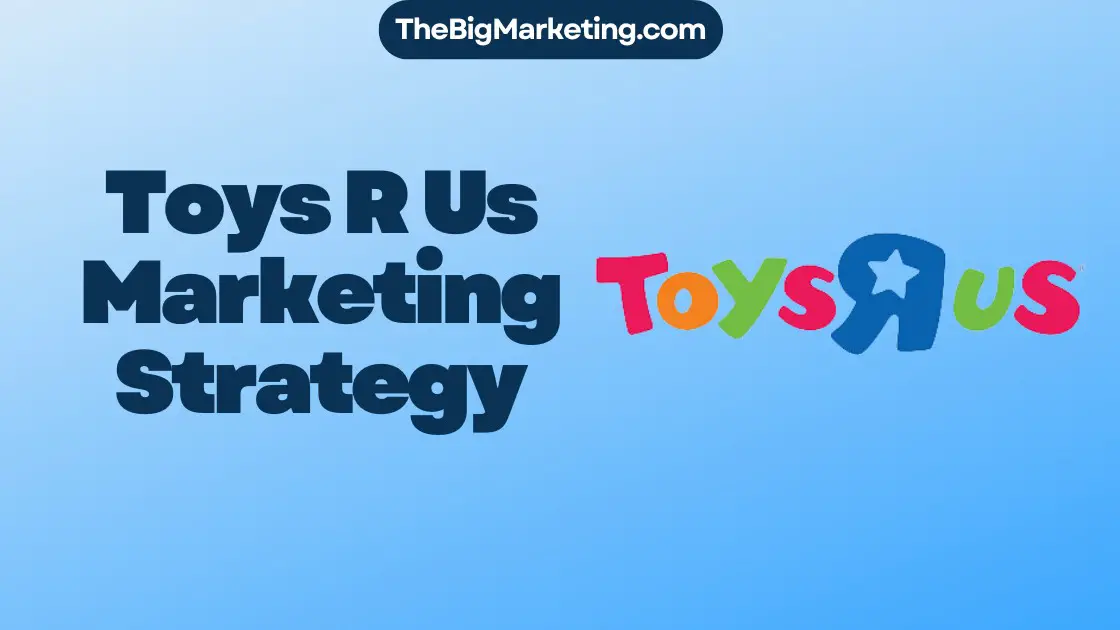Abercrombie & Fitch, founded in 1892, has established itself as a prominent player in the retail industry with a rich history. Known for its unique marketing strategies, the brand has created a distinct retail environment characterized by dim lighting, loud music, and its signature scent. The company has primarily targeted teenagers and young adults, catering to their fashion needs with premium products that have fostered strong brand loyalty.
However, Abercrombie & Fitch hasn’t been without its challenges. The company faced legal disputes pertaining to discriminatory hiring practices, leading to a landmark ruling by the U.S. Supreme Court in favor of Samantha Elauf, highlighting the importance of inclusivity in the workplace. In response, Abercrombie & Fitch implemented changes to its “Look Policy” to promote a more inclusive hiring approach.
Recognizing the need to adapt to changing market dynamics, Abercrombie & Fitch embarked on a rebranding journey, shifting its marketing strategy towards inclusivity and authenticity. This strategic shift revitalized the brand’s image and resonated positively with its target audience.
In addition to its new marketing approach, the company embraced digital marketing and e-commerce, recognizing the power of engaging with the younger demographic through online channels. The integration of digital sales played a significant role in driving business growth, with the third quarter of 2021 witnessing a commendable 8% year-over-year increase in digital sales, accounting for 46% of total sales.
Despite these achievements, challenges persist as Abercrombie & Fitch navigates an ever-evolving consumer landscape and seeks to address past controversies. Negative press surrounding accusations of racial discrimination and intolerant practices marred the brand’s reputation, resulting in legal action and public scrutiny. The company has been proactive in tackling these issues, striving to build a more inclusive and diverse brand image by revisiting its hiring and promotion practices.
By studying the strategic HR practices of companies like Apple, Abercrombie & Fitch seeks to learn from their approach to diversity, inclusiveness, job design, and recruitment. This knowledge empowers the brand to continually improve its human resource management and create a more harmonious work environment.
In summary, Abercrombie & Fitch’s branding strategy has evolved significantly over the years. The company’s commitment to inclusivity and authenticity, coupled with its embrace of digital marketing and e-commerce, has been instrumental in revitalizing its brand image and driving business growth. Challenges remain, but Abercrombie & Fitch is dedicated to overcoming them, proving its commitment to continuous improvement and adapting to the ever-changing demands of the market.
Key Takeaways:
- Abercrombie & Fitch has a long history in the retail industry, with a distinct branding strategy that includes dim lighting, loud music, and a signature scent.
- The company faced legal challenges regarding discriminatory hiring practices, prompting changes in its “Look Policy” to promote inclusivity.
- A shift towards inclusivity and authenticity in its marketing strategy has positively influenced Abercrombie & Fitch’s brand image.
- The company has embraced digital marketing and e-commerce to engage with a younger audience and drive business growth.
- Challenges persist as Abercrombie & Fitch strives to address past controversies and adapt to changing consumer behavior.
The Evolution of Abercrombie & Fitch
Abercrombie & Fitch, founded in 1892 as an outdoor equipment store in New York City, has undergone a remarkable evolution throughout its history. Initially catering to outdoor enthusiasts with upscale sporting goods and outdoor apparel, the brand has transformed its identity and offerings to adapt to changing consumer preferences and market dynamics.
In 1904, co-founder Ezra Fitch purchased a large share of the company, marking an important turning point in its development. As the brand began to redefine itself, Abercrombie & Fitch shifted its focus from outdoor gear to casual sportswear, targeting a younger demographic with preppy and collegiate-style clothing.
This strategic repositioning paved the way for Abercrombie & Fitch’s continued evolution and expansion. Despite financial challenges that led to a bankruptcy filing in 1977, the brand persevered and made a notable comeback in recent years. In fact, Business Insider recognized Abercrombie & Fitch as the “biggest retail comeback of the year” in 2018.
Abercrombie & Fitch’s success can be attributed, in part, to its ability to understand and resonate with its target audience. Millennials and Gen Z, in particular, place a high value on authenticity and inclusivity. The brand has responded to these preferences by embracing diversity and accurate representation in its advertising campaigns. Studies have shown that 62% of customers aged 18 to 25 years old take notice of inclusive advertising when making purchase decisions.
Moreover, Abercrombie & Fitch’s commitment to addressing social inequality has garnered loyalty from 57% of consumers who appreciate brands that take action in this realm. By aligning its values with those of modern society, Abercrombie & Fitch has been able to build trust and connectivity with its diverse customer base.
In order to ensure long-term success, brands must adapt with the times and embrace change. Abercrombie & Fitch has demonstrated this adaptability by constantly evolving its product range, expanding into new markets, and enhancing its digital presence. By embracing an omnichannel approach, the brand has been able to connect with customers both offline and online.
Looking ahead, Abercrombie & Fitch has ambitious plans for growth. The company aims to open 60 stores in Asian markets such as China and South Korea over the next five years, capitalizing on the region’s growing consumer base. Additionally, Abercrombie & Fitch intends to increase sales by over 30% in 2022, while introducing new product lines like sleepwear, athletic clothing, and watches.
The brand’s rebranding efforts, focus on digital transformation, and commitment to customer engagement have positioned Abercrombie & Fitch for continued success and relevance in the ever-changing retail landscape. Its ability to adapt, evolve, and connect with consumers is a testament to its resilience and long-standing appeal.
Challenges and Controversies
Abercrombie & Fitch has faced numerous challenges and controversies throughout its history, impacting its brand image and public perception. The company’s marketing strategies, including its controversial marketing tactics, discriminatory hiring practices, and overtly sexual advertising, have generated significant backlash and legal issues.
In the early 2000s, Abercrombie & Fitch came under fire for racist t-shirts that depicted Asian stereotypes, leading to protests and widespread criticism. Additionally, the company faced legal challenges regarding its discriminatory hiring practices, which resulted in a class-action racial discrimination case.
One prominent controversy that gained national attention was the Supreme Court ruling against Abercrombie & Fitch in 2015. The ruling was related to the company’s refusal to hire a woman wearing a headscarf based on its “look policy.” This case highlighted the discriminatory nature of the company’s practices and further damaged its reputation.
Furthermore, Abercrombie & Fitch’s overtly sexualized advertising campaigns drew criticism for objectifying women and perpetuating unrealistic beauty standards. The company’s advertisements featured highly attractive, mostly white, and often semi-nude models, which fueled public outrage and raised concerns about the negative impact on body image and self-esteem.
Abercrombie & Fitch’s controversial marketing strategies and discriminatory practices have led to legal consequences and financial repercussions. The company agreed to pay more than $40 million to settle the class-action lawsuit related to its discriminatory hiring practices and paid $50 million to settle another racial discrimination lawsuit in California.
Despite these challenges, Abercrombie & Fitch has taken steps to address its controversies and improve its image. The company has implemented changes under the leadership of CEO Fran Horowitz, focusing on inclusivity and promoting a more diverse representation in its marketing campaigns. These efforts have resulted in rebounded sales and a more positive perception of the brand.
| Year | Controversy/Challenge |
|---|---|
| 1996 | No mention of controversial marketing or discriminatory practices |
| Early 2000s | Controversy over racist t-shirts and discriminatory hiring practices |
| 2015 | Supreme Court ruling against Abercrombie & Fitch for denying employment based on the company’s “look policy” |
| NA | Class-action lawsuits related to discriminatory hiring practices and racial discrimination |
Rebranding and Digital Transformation
In 2017, Abercrombie & Fitch embarked on a rebranding journey under the leadership of CEO Fran Horowitz. Recognizing the need to adapt to changing consumer preferences and market dynamics, the brand underwent a significant digital transformation to enhance its online presence and drive sales growth.
With approximately half a billion dollars invested in its digital infrastructure, Abercrombie & Fitch successfully achieved $1 billion in digital sales by 2018, showcasing the effectiveness of its e-commerce strategies and the impact of its rebranding efforts.
One of the key initiatives that fueled this growth was the introduction of the “purchase online, pick up in-store” feature. This convenient option not only streamlined the shopping experience for customers but also led to 1.5 million store visits in 2017, driving foot traffic and further strengthening the brand’s connection with its audience.
Furthermore, Abercrombie & Fitch’s sister brand, Hollister, experienced a consistent increase in popularity, contributing to the overall success of the company’s rebranding efforts. This positive trend was also reflected in the improving consumer sentiment towards Abercrombie & Fitch, demonstrating the effectiveness of the brand’s strategic shift.
To support its digital transformation, Abercrombie & Fitch made substantial upgrades in its product quality, elevating the overall customer experience. By focusing on better fabrics, zippers, and buttons, the brand aimed to enhance the perceived value of its products and attract a wider range of customers.
The success of Abercrombie & Fitch’s rebranding and digital transformation strategies can be seen in its stock performance. After facing a decline in stock value, dropping to approximately $10 per share in 2017, the brand made a remarkable recovery, with the stock price reaching almost $40 per share in February 2022.
| Key Achievements | Statistics |
|---|---|
| Investment in digital infrastructure | $500 million |
| Digital sales achieved by 2018 | $1 billion |
| Store visits generated by “purchase online, pick up in-store” feature | 1.5 million (2017) |
| Highest operating margin achieved | In over a decade |
| Rise in stock value | $10 per share (2017) to almost $40 per share (February 2022) |
The Omnichannel Approach
In today’s digital age, successful marketing strategies require businesses to meet customers where they are. Abercrombie & Fitch has embraced the power of omnichannel marketing to create a seamless and engaging shopping experience across all touchpoints. By integrating multiple channels and platforms, Abercrombie & Fitch has been able to personalize interactions, enhance social media engagement, and drive customer loyalty.
Seamless Integration
Abercrombie & Fitch understands the importance of delivering a consistent brand experience. Through seamless integration of their online and offline channels, they have created a cohesive journey for customers. Whether shopping in-store or online, customers can expect the same level of quality, service, and style. This integration ensures that customers can easily transition between channels, making their shopping experience effortless and enjoyable.
Personalization
One of the key elements of Abercrombie & Fitch’s omnichannel approach is personalization. By leveraging customer data and insights, they are able to tailor recommendations, promotions, and communications to individual preferences. This level of personalization creates a more relevant and engaging experience for customers, increasing customer satisfaction and loyalty.
Social Media Engagement
Social media has become an integral part of modern marketing strategies, and Abercrombie & Fitch recognizes its power. Through strategic social media engagement, they are able to connect with their target audience, build brand awareness, and drive customer interaction. By leveraging social media platforms, Abercrombie & Fitch creates a two-way conversation with their customers, fostering brand loyalty and advocacy.
By embracing the omnichannel approach, Abercrombie & Fitch has positioned themselves as a leader in the retail industry. Their seamless integration, personalization, and social media engagement have not only enhanced the customer experience but also resulted in significant business growth. As they continue to invest in omni-channel and CRM capabilities, Abercrombie & Fitch is well-positioned to thrive in the ever-evolving digital landscape.
Product Range and Pricing Strategy
Abercrombie & Fitch, founded in 1892, has built a strong reputation in the fashion industry with its diverse product range. In addition to its flagship products such as T-shirts and Denim, the brand has expanded its offerings to include Graphic Tees, Chambary Shirts, A&F Shorts, Swimwear, Fragrances, and an array of other apparel and accessories. Abercrombie & Fitch’s product mix in 2023 encompasses categories such as apparel, accessories, fragrances, swimwear, loungewear, and shoes, catering to various customer preferences and needs.
When it comes to pricing, Abercrombie & Fitch adopts a value-based pricing strategy. The brand places great emphasis on the value its products provide, maintaining a delicate balance between quality assurance and brand exclusivity. By offering products that reflect their perceived value and align with customer expectations, Abercrombie & Fitch ensures that customers feel they are making worthwhile purchases.
Abercrombie & Fitch leverages promotions, sales, discounts, price bundling, and limited-edition collections to attract customers at different price points. This strategy allows the brand to capture a wide range of consumers while maintaining price transparency.
Assortment Strategy
Abercrombie & Fitch’s assortment strategy is well-crafted to reflect market trends and customer demands. The brand has undergone significant changes in its collection, with a 72% decrease in items displaying a logo. In 2024, only 8% of the total collection features logos. Additionally, 48% of logo items are now available on sale, providing customers with discounted options.
The assortment strategy also emphasizes bottoms, with a 65% dedication to womenswear, while menswear assortment decreased by 22% year over year. Jeans have a central place in the brand’s product range, accounting for 51% of the bottoms category—a 96% higher focus on jeans compared to the average among US mass market brands. This focus on jeans reflects the brand’s efforts to cater to customer preferences and establish itself as a leader in denim fashion.
While Abercrombie & Fitch offers a wide range of sizes, it falls short in the activewear category, lacking 4XL, 3XL, and 4XL sizes compared to its competitors. However, the brand is making strides towards inclusivity and diversity, with its gender-inclusive collection making up 1% of its overall assortment.
Pricing Challenges and Strategies
The fashion industry has experienced price inflation at a 40-year high, impacting retailers worldwide. Abercrombie & Fitch faced challenges in demand stabilization due to customers not perceiving an equivalent increase in product quality. To address this, the brand raised prices by 12%.
Abercrombie & Fitch’s pricing strategy focuses on maintaining a delicate balance between product value and customer affordability. Despite price increases, the brand continues to leverage its reputation and brand exclusivity to justify the perceived value of its products. Furthermore, Abercrombie & Fitch constantly explores promotional efforts, sales, and discounts to engage customers and maintain a competitive edge in the market.
By incorporating a diverse product range and implementing a value-based pricing strategy, Abercrombie & Fitch remains a prominent player in the fashion industry, catering to a wide range of customer preferences and embracing the evolving needs of its target audience.
| Statistic | Data |
|---|---|
| Logo Items | 72% decrease, now accounting for 8% of the total collection |
| Discounted Logo Items | 48% of logo items on sale |
| Menswear Assortment | 22% decrease YoY |
| Womenswear Assortment | 65% dedication |
| Focus on Bottoms | Emphasis on bottoms category in assortment strategy |
| Jeans Share in Bottoms Category | 51%, representing a 96% higher focus on jeans compared to the average |
| Sizes Offered | Wide range; lacks 4XL, 3XL, and 4XL sizes in activewear compared to competitors |
| Gender-Inclusive Collection | 1% of overall assortment |
| Price Increase | 12%, facing challenges in demand stabilization |
| Price Inflation | 40-year high, Abercrombie & Fitch among US retailers with highest price hikes |
Widely Available and Promotional Efforts
Abercrombie & Fitch, with over 400 stores in the US alone, emphasizes store availability to cater to its target demographic of young, stylish, and athletic individuals. However, the brand faced challenges in recent years, posting a severe loss in 2014 and losing brand equity over time, dropping out of the top 500 rankings by Forbes in 2016.
To counter this decline, Abercrombie & Fitch adopted a proactive approach, expanding its presence globally through international expansion efforts, particularly in countries like Mexico where it started franchising in 2015. By venturing into new markets, the brand aimed to revitalize its image and tap into new customer bases.
One of the key strategies employed by Abercrombie & Fitch is its promotional efforts. The brand recognizes the importance of capturing the attention of its target audience in an overcrowded advertising landscape. With consumers exposed to around 3,000 advertising messages each week, it is crucial for Abercrombie & Fitch to stand out.
Utilizing bold and eye-catching advertisements across various channels, Abercrombie & Fitch aims to create a strong brand presence and engage with its customers. The brand leverages social media platforms to connect with its target demographic and actively promotes its products through visually appealing and aspirational content.
Through its promotional efforts, Abercrombie & Fitch taps into the preferences and behaviors of its core consumers. Studies have shown that sexual advertisements have an impact on consumer buying behavior, with 32% of consumers more likely to purchase a product featuring sexual imagery.
In fact, a survey revealed that 51% of young adults between the ages of 18 and 34 pay more attention to advertisements with sexual images. Abercrombie & Fitch, known for its provocative branding, strategically incorporates visually appealing and seductive elements in its promotional campaigns to capture the attention of its target audience.
Additionally, the brand, under the leadership of Mr. Jeffries, implemented promotional pricing strategies to boost sales and clear inventory during challenging times. By offering price reductions as high as 90%, Abercrombie & Fitch aimed to entice customers with attractive discounts and create a sense of urgency to make a purchase.
However, it’s worth noting that Abercrombie & Fitch has since adjusted its promotional strategies. In May 2010, Mr. Jeffries announced a limited future use of price promotions at Abercrombie & Fitch and its kids brand, abercrombie, while continuing promotions at Hollister, the lowest-priced brand in the portfolio. This shift reflects the brand’s intent to strike a balance between promotional pricing and maintaining its premium image.
In conclusion, Abercrombie & Fitch recognizes the importance of widely available products and effective promotional strategies to connect with its target audience. By expanding its store footprint and harnessing the power of eye-catching advertisements, the brand aims to regain its competitive edge and engage with young, fashion-conscious consumers worldwide.
Influencer Marketing Strategy
Abercrombie & Fitch understands the power of influencer marketing in reaching and engaging its target audience. Leveraging the popularity and influence of social media personalities, Abercrombie & Fitch has successfully integrated influencer marketing into its overall marketing strategy, effectively increasing brand awareness and driving customer engagement.
Abercrombie & Fitch collaborates with carefully selected influencers who align with the brand’s values, aesthetic, and target customer group. By partnering with influencers who are relatable to the 25 to 29-year-old demographic, Abercrombie & Fitch is able to build an authentic connection with its audience, promoting a sense of trust and resonance.
One of the key factors that sets Abercrombie & Fitch’s influencer marketing apart is its focus on authenticity. The brand ensures that the content created by influencers feels genuine and relatable, resonating with the target audience and conveying the brand’s evolving, inclusive brand image. This emphasis on authenticity helps Abercrombie & Fitch build credibility and maintain a loyal customer base.
With a strong presence on platforms like TikTok and Instagram, Abercrombie & Fitch utilizes influencer collaborations to project a more youthful and fun brand identity. The platform TikTok, in particular, allows the brand to tap into its target audience’s interests and preferences, capturing their attention and driving engagement.
Influencer marketing is not only seen as a means to increase brand visibility, but also as a game-changer for product launches. By strategically partnering with influencers, Abercrombie & Fitch is able to generate excitement and anticipation around new product releases, leveraging their influence to create buzz and curiosity among their follower base.
Diverse Approaches and Future Trends
As the influencer marketing landscape evolves, industry analysts predict a shift towards greater diversity in influencer approaches on platforms like TikTok. Brands like Abercrombie & Fitch are expected to embrace a wider range of influencers, amplifying different voices and representations to create a more inclusive brand perception.
To effectively measure the success of influencer marketing campaigns, tracking and analytics tools are recommended. These tools provide valuable insights into engagement metrics, reach, and conversion rates, allowing Abercrombie & Fitch to assess the impact and ROI of their influencer collaborations.
In conclusion, Abercrombie & Fitch’s influencer marketing strategy has proven to be a powerful tool in connecting with its target audience and driving engagement. By collaborating with carefully selected influencers, focusing on authenticity, and leveraging popular social media platforms, the brand effectively conveys its evolving, inclusive brand image to a diverse audience of TikTok viewers. As the influencer marketing landscape continues to evolve, Abercrombie & Fitch remains at the forefront, capitalizing on the power of influencers to enhance brand perception and drive business growth.
Proactive Customer Service and Community-Building
In its quest to provide exceptional customer experiences, Abercrombie & Fitch goes beyond reactive support by implementing proactive customer service strategies. By leveraging advanced data analytics and AI-driven tools, the brand anticipates customer needs, identifies potential issues, and takes proactive measures to address them.
Abercrombie & Fitch recognizes the importance of building a strong sense of community among its customers. Community-building initiatives serve as a foundation for fostering long-term customer engagement and loyalty. Through exclusive events, workshops, and interactive platforms, the brand creates spaces where customers can connect with each other and engage in meaningful conversations with brand representatives.
One of Abercrombie & Fitch’s successful endeavors in community-building involves its robust presence on social media platforms. By harnessing the power of user-generated content, the brand has been able to tap into the authenticity and relatability that followers and potential customers seek. With almost 55,000 TikTok followers and nearly 5 million Instagram followers gained through social media engagement, Abercrombie & Fitch has successfully built brand awareness and cultivated a loyal community.
Furthermore, Abercrombie & Fitch explores innovative ways to enhance customer experiences. For instance, the Share2Pay feature within the Hollister mobile app has proven to be a resounding success. This feature allows users to share shopping carts with their parents or guardians, benefiting the significant teenage segment of their target audience. As a result, users of the Share2Pay option have placed nearly two times more orders compared to those who didn’t utilize it. This soft launch success showcases the brand’s commitment to leveraging technology for improved customer engagement and satisfaction.
The Power of Community
Abercrombie & Fitch understands the distinction between an audience and a community. While an audience may passively consume content, a community actively participates in conversations, attends events, and advocates for the brand. Building a loyal and engaged community requires sustained efforts and meaningful interactions.
Brand loyalty is deeply connected to the notion of shared values and community involvement. Abercrombie & Fitch aims to connect with its customers on a personal level by reflecting strong values and engaging in community-driven initiatives. In a saturated market, brands that demonstrate authenticity, relatability, and a commitment to community-building are more likely to retain loyal customers.
As part of its customer service transformation, Abercrombie & Fitch invests heavily in AI and data analytics. This strategy aligns with the company’s commitment to continuous improvement and operational excellence. By leveraging AI tools and analytics, the brand can enhance customer satisfaction and deliver personalized experiences at scale.
Through collaborations with industry experts like Kimberly Masters from Sam’s Club and Amanda Wiltshire-Craine from PayPal, Abercrombie & Fitch remains at the forefront of customer service innovation. These partnerships enable the brand to learn from leaders in the field and incorporate cutting-edge technologies into their customer service operations.
Overall, proactive customer service and community-building lie at the heart of Abercrombie & Fitch’s customer engagement strategy. By anticipating customer needs, fostering a sense of community, and leveraging technology, the brand aims to provide exceptional experiences that drive long-term loyalty.
| Statistics | |
|---|---|
| Abercrombie & Fitch TikTok followers | 55,000 |
| Abercrombie & Fitch Instagram followers | 5 million |
| Views on promotional video with influencer Ken Eurich | 172,000 |
| Orders placed using Share2Pay feature | 2 times more by users |
| Significant teenage audience utilizing Share2Pay feature | Benefited by sharing shopping carts with parents/guardians |
Tech-Driven Personalization and Accessibility
In today’s digital age, Abercrombie & Fitch Co. is at the forefront of using technology to provide personalized experiences for its customers. Through tech-driven personalization, the brand aims to cater to individual preferences and enhance the overall shopping journey. Additionally, Abercrombie & Fitch Co. prioritizes accessibility to ensure that its offerings are inclusive and available to all.
One aspect of tech-driven personalization is the use of artificial intelligence (AI) solutions. These AI models can provide accurate and detailed forecasting, down to the style, color, size, and location level. By analyzing vast amounts of data, AI assists in optimizing inventory decisions, placement, buys, and workflow. Moreover, AI implementation requires companies and planning teams to set up key performance indicators (KPIs) to assess its effectiveness.
However, AI’s introduction has raised concerns among employees, with more than 60% expressing worries about its impact on their jobs. It is crucial for organizations to address these concerns and ensure that AI enhances human roles rather than replacing them completely. When humans work in conjunction with AI, it can lead to improved job performance and efficiency.
Another significant aspect of tech-driven personalization is multichannel support. Abercrombie & Fitch Co. offers a range of accessibility features on its website and app, making it more inclusive for people with disabilities. The brand also provides multilingual support, catering to customers who speak different languages and increasing its global reach.
In addition to personalization and accessibility, Abercrombie & Fitch Co. understands the importance of building customer loyalty. Personalization has become a high priority for driving loyalty, especially among different generations. According to statistics, Generation K and Millennials prioritize personalized experiences the most, with 54% and 52% respectively. Additionally, almost half of all millennials expect brands to customize offers, showing their desire for tailored communication.
Challenges and Solutions
While personalization offers significant benefits, there are challenges that brands face in implementing effective strategies. One common struggle is managing site personalization due to the vast amount of data involved. This challenge highlights the need for clean and organized data to ensure accurate and efficient personalization efforts.
Another challenge is cross-channel personalization for attribution. Connecting customer data across various channels and platforms is essential for providing a seamless and consistent personalized experience. The main challenge for loyalty members in this regard is universal identification, ensuring that every interaction is properly attributed to the correct customer.
Access to clean data is seen as a key impediment to utilizing personalized content. Retailers need accurate and up-to-date data to deliver relevant and timely experiences. The lack of access to clean data places retailers at a severe disadvantage for current and future growth, underscoring the importance of thorough data management practices.
Personalization and Business Growth
The retail industry has witnessed the positive impact of personalization on customer experiences and business growth. Various brands have implemented personalized services to enhance customer satisfaction and loyalty.
Nordstrom, for example, has introduced the concept of “co-shopping” with customers and associates, creating a collaborative and personalized shopping experience. Bonobos’ showroom concept focuses on exceptional customer service and online ordering, tailoring the experience to individual preferences.
Neiman Marcus has utilized beacons for in-store offers and personalized services, providing customers with tailored recommendations and promotions. Abercrombie & Fitch has taken personalization a step further by introducing personalized dressing rooms in concept stores, revolutionizing the way customers try on clothes.
These personalized experiences have contributed to Abercrombie & Fitch’s overall success and growth. The brand reported a 20% net sales increase in Q3 across all regions, brands, and selling channels. It expects net sales to rise between 12% and 14% for FY2023, with an operating margin projected to be around 10%.
By targeting the young Millennial customer segment and emphasizing lean inventory management, Abercrombie & Fitch has achieved positive comps for the past 11 quarters under the leadership of CEO Fran Horowitz. Womenswear, in particular, has experienced 13 consecutive quarters of growth.
Overall, tech-driven personalization and accessibility are vital pillars for Abercrombie & Fitch Co.’s branding strategy. By leveraging AI, enhancing accessibility, and providing personalized experiences, the brand aims to build customer loyalty and drive business growth in the evolving retail landscape.
| Percentage of Respondents Prioritizing Personalization for Loyalty by Generation | |
|---|---|
| Generation K | 54% |
| Millennials | 52% |
| Generation X | 48% |
| Baby boomers | 40% |
Success Factors and Business Growth
Abercrombie & Fitch, with its longstanding presence in the fashion retail industry since 1892, has demonstrated remarkable resilience and adaptability over time. The brand’s global reach, marked by its presence in key international markets, allows it to tap into diverse customer segments, expanding its market influence.
Abercrombie & Fitch’s success can be attributed to a combination of strategic factors. The company’s premium pricing strategy strikes a balance between exclusivity and accessibility, appealing to consumers who value high-quality fashion.
While some may perceive limited product diversification in Abercrombie & Fitch’s portfolio as a challenge, the brand’s focused approach allows it to maintain a clear brand identity and cater to its loyal customer base. By carefully curating their offerings, Abercrombie & Fitch ensures that every product aligns with their brand ethos, attracting customers who resonate with their style and values.
Furthermore, the expansion of e-commerce presents a tremendous growth opportunity for Abercrombie & Fitch. With the growing trend of online shopping, the brand can tap into a wider audience and provide a seamless shopping experience that caters to the evolving expectations of digital consumers.
Abercrombie & Fitch also has the opportunity to align itself with sustainable fashion trends, showcasing its commitment to responsible practices. By adopting environmentally conscious strategies, the brand can attract consumers who prioritize eco-friendly choices and distinguish itself as a responsible choice in the industry.
Despite its success, Abercrombie & Fitch operates in a highly competitive landscape. To maintain its market share, the brand recognizes the importance of differentiation and innovation. Staying attuned to changing consumer preferences and adapting its offerings accordingly is crucial to sustaining brand appeal.
It’s important to note that economic uncertainty poses a potential risk to Abercrombie & Fitch’s sales. Fluctuations in consumer spending patterns can impact discretionary fashion purchases. However, with a proactive approach and a focus on customer engagement, the brand can mitigate these risks and navigate through economic challenges.
Overall, Abercrombie & Fitch’s success factors and business growth can be attributed to its seamless integration across channels, personalized experiences, and a strong emphasis on customer engagement. By optimizing these factors, the brand continues to thrive in the ever-changing retail landscape.
| Year of Establishment | 1892 |
|---|---|
| Number of Stores | More than 850 stores |
| Sales Growth | 5% increase in overall sales in 2020 |
| Market Position | Ranked as the 474th highest brand in the world in 2012 |
| Marketing Strategy | Increased marketing spend focusing on authentic customer-inspired events |
| Retail Developments | Closed flagship stores in Soho, New York, Fukuoka, Japan, and Milan, Italy in 2019 |
| Recent Growth | Second consecutive quarter of growth in June with same-store sales up 3% at Abercrombie |
| Issues Faced | Advertising controversies, legal conflicts, and employee management practices |
Conclusion
In conclusion, Abercrombie & Fitch’s branding strategy has proven to be a resounding success. By embracing rebranding, digital transformation, and an omnichannel approach, the company has adapted to changing consumer behaviors and market demands, solidifying its position in the fashion retail industry.
A key factor in Abercrombie & Fitch’s success has been its commitment to inclusivity and diversity, addressing concerns raised by consumers and the public. Efforts to enhance brand identity and adjust peripheral values have allowed the company to maintain its core values while appealing to a broader audience.
The brand’s ability to navigate through challenges, such as reputation management during crisis situations, has been commendable. Leveraging social media platforms like Facebook, Instagram, and Twitter has enabled Abercrombie & Fitch to engage with its audience and shape public perception, safeguarding its brand image and revenue.
Looking forward, Abercrombie & Fitch’s strategic expansion plans, including the Canadian, Japanese, and British markets, along with continued profitability in its store concepts, position the company for continued growth and success in the future.







